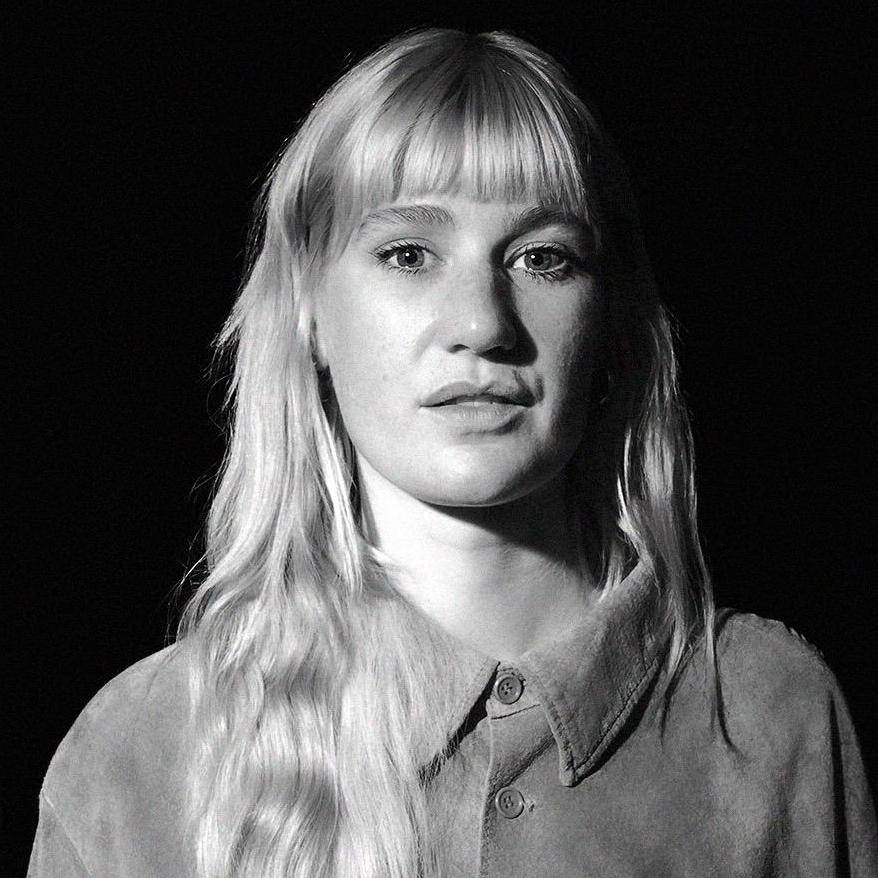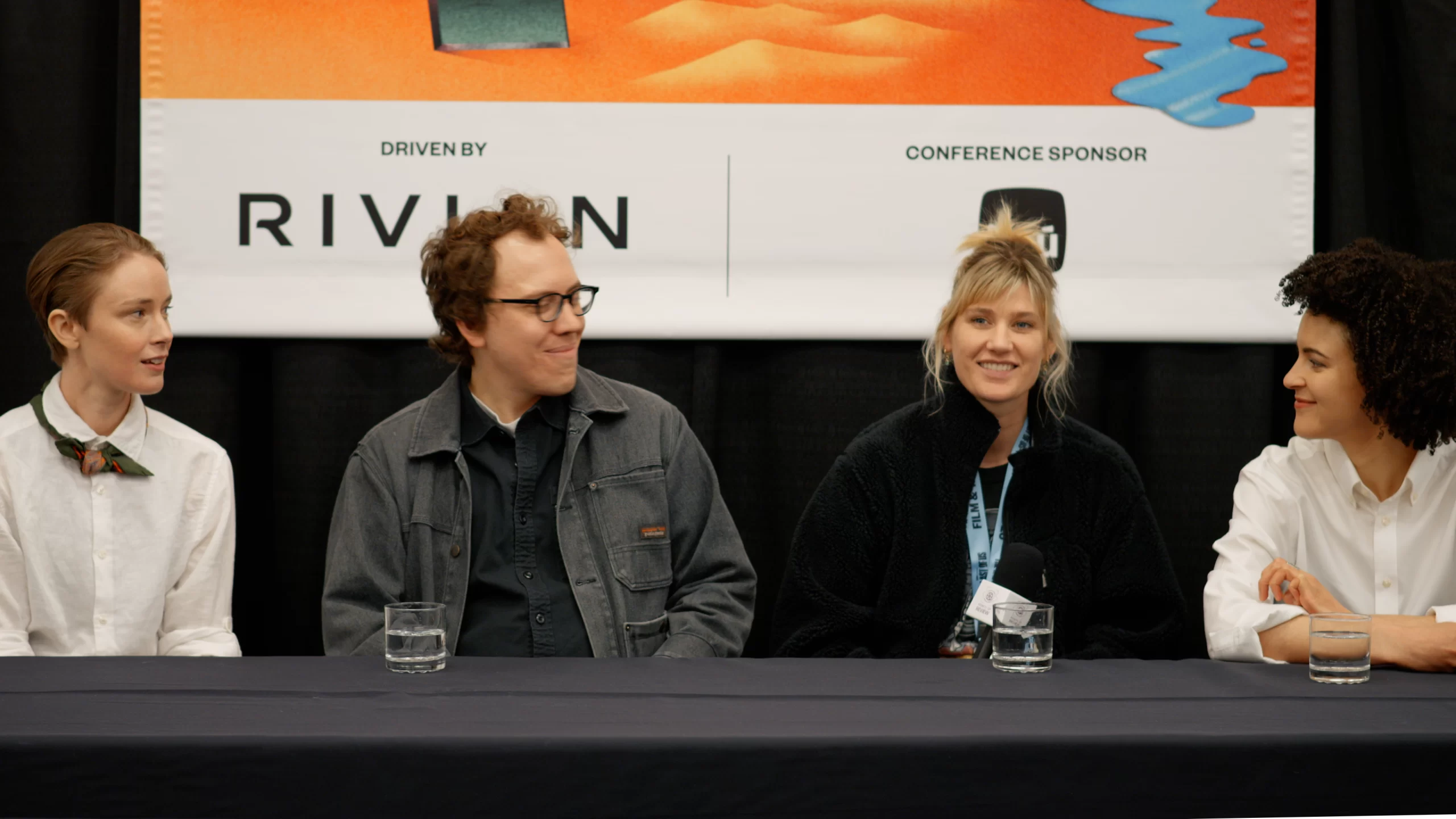Dead Lover: A Film Destined for Cult Status

The Story of Dead Lover
Few films capture the unhinged spirit of independent cinema quite like the Canadian project, Dead Lover. The sophomore feature from Grace Glowicki, the film is a feverish blend of romance, horror, sex, and dark comedy, starring Glowicki alongside Ben Petrie, Leah Doz, and Lowen Morrow. Following its world premiere in the Midnight section at the Sundance Film Festival – where it quickly garnered critical praise – the film made its way to SXSW, where I had the opportunity to sit down with the cast to discuss its unconventional origins and creative process.
At its core, Dead Lover is a love story wrapped in something much stranger. Glowicki plays a lonely gravedigger whose overpowering stench of corpses makes human connection nearly impossible. When she finally meets her dream man, played by Petrie, their intense romance is abruptly cut short when he drowns at sea. Grief-stricken and desperate, she takes matters into her own hands – resorting to body-horror-infused experiments to bring him back to life. Co-written by Glowicki and Petrie, the film balances absurdist humour with a meditation on love, identity, and obsession.
Like many independent projects, Dead Lover began with little more than creative instinct.
Glowicki recalls that she “just knew [she] wanted to make a movie” and started brainstorming with a small circle of friends, including a therapist and fellow filmmakers, developing ideas through free association.
The film’s surreal imagery emerged organically, with Glowicki explaining that one inspiration came from a friend’s dream about a burlap bag moving in the corner of a room. “He had a sudden realization that it was his severed penis inside the bag, and the severed penis was animate and alive, moving around in there,” she says.
The film’s unique, ensemble-driven approach extended beyond the script.
Doz describes the rehearsal process as rare, noting that Dead Lover “was built like a theatre troupe,” with the cast working collaboratively for weeks before shooting. “I don’t understand why projects don’t involve actors earlier,” she says. “It’s so rare, and I think there’s something about indie filmmaking and caring about what you’re making… it means you get to invest together”.
Following its festival success, Dead Lover has secured North American distribution through Cartuna x Dweck, a newly formed venture between Cartuna and Dweck Productions.
The acquisition – one of the first major sales out of SXSW – signals a promising future for the film, with a theatrical release planned. “What Grace and her collaborators have dug up from their creative depths is like nothing I’ve ever seen before,” says Hannah Dweck, co-founder of Dweck Productions. “We can’t wait to set this exuberantly unrestrained, disgusting, beautiful, smelly, exhumed corpse of a rom-com loose on the world.”
Dead Lover is already carving out a space as a future cult classic.
Bringing Dead Lover to Life
Dead Lover is an unhinged romantic horror-comedy – one that embraces the grotesque with a poetic heart. Underneath its surreal premise is a film built on deep character work, improvisation, and a distinctly theatrical approach to performance. From its earliest stages, Grace Glowicki shaped Dead Lover through a process that blurred the line between scripted storytelling and improvisational theatre, allowing actors to inhabit their roles in ways rarely seen in conventional film production.
Lowen Morrow, who comes from a theatre background, recalls that the rehearsal process felt more like working on a stage production than a typical indie film. “Grace reached out to a few theatre people, and we rehearsed like a devised theatre production,” they say. “There were a variety of things we would do: get up and read the script, improvise around the ideas of the script, do physical movement exercises to figure out how we wanted these characters to move. It was very theatre; it was very familiar.”
This immersive process extended onto the set itself, where spontaneity became a defining element of the film’s tone. “We showed up one day as certain characters, and it was like, ‘Let’s throw the script out the window and just improvise these scenes,’” they add.

This emphasis on experimentation carried into all aspects of production.
Ben Petrie, who co-wrote the script with Glowicki, explains that while most characters had been deeply developed in the rehearsal process, certain elements – such as the film’s oddball group of sailors – came together at the last minute. “The sailors were somehow on the back burner, so on the day we arrived, nobody knew what their character was going to be. No one had any idea,” he says. But when they stepped into the costumes designed by Courtney Mitchell, something clicked. “We each reached deep into our psyche and pulled out whatever character we wanted. Leah decided that morning that her sailor had a patois accent – it just made sense. I decided my character was more or less incoherent, and Lowen decided that her sailor was Mickey Mouse. It was a flash-in-the-pan moment.”
For a film that deals so much with transformation – both literal and metaphorical – the creative process behind Dead Lover mirrored its themes.
Morrow describes the experience as an artistic feedback loop: the script inspired the improv, the improv reshaped the script, and that back-and-forth extended into how scenes were shot. “We would make ourselves laugh so hard, and so many things that we improvised wound up in the script,” they say. “It even extended to working with the DP, just playing around – ‘What if we did this? What if we did that?’”
This raw, uninhibited approach to performance and filmmaking is what gives Dead Lover its unpredictable energy.
The Visual Language of Dead Lover
Dead Lover doesn’t just tell a story – it immerses its audience in a fever dream of otherworldly imagery, handmade aesthetics, and visceral textures. Much like its unconventional narrative, the film’s visual world was shaped by instinct, collaboration, and a commitment to an experimental theatre-inspired aesthetic.
From the outset, Grace Glowicki knew she wanted the film to look like “experimental low-budget theatre,” drawing from the kind of raw, intimate stage productions where atmosphere is created through suggestion rather than polished realism. “It’s an aesthetic I’ve always loved,” she says. “But it really was the collaboration that made the film look like it does today.”
Glowicki credits Becca Brooks Morrin, the film’s production designer, with bringing that vision to life. “She just understands how to do a DIY aesthetic. Basically, all I had to say was ‘experimental low-budget theater,’ and she just goes for it.” The same applied to Courtney Mitchell (costume design) and the film’s makeup artists, who instinctively grasped the film’s strange, decayed beauty.
The cinematography was equally unconventional. Shot on Bolex and 16mm film, Dead Lover takes on an almost tangible, grainy texture – something Glowicki attributes to the singular approach of Rhayne Vermette, the film’s cinematographer. “I was such a fan of her work, and I knew she knew how to tell the story in darkness,” Glowicki says. “She shoots in such a tactile way. We were shooting on Bolex and 16mm film, and she’s just such a tactile person and thinker, free and down to improvise.” Unlike traditional productions, Dead Lover had no shot list.
Instead, Vermette was given full creative freedom each morning. “We’d show her the blocking in the morning, and then say, ‘What colours do you see? How do you want to shoot it? What camera?’ She’d have instincts we’d go back-and-forth.”
This open-ended process extended to the actors, with Vermette incorporating their instincts into the film’s visual design. In one of the film’s fight sequences, Lowen Morrow contributed ideas about movement and framing, which Vermette readily adapted. “She was very open to hearing all of our ideas and working with them,” Glowicki recalls. “The film looks the way it does because of Becca [Brooks Morrin], Courtney [Mitchell], Rhayne [Vermette], Joseph [Hinds] and Sam [Breault].”
The result is a film that feels deeply personal yet completely otherworldly, as if conjured from the subconscious. With its mix of analog textures, rich colour palettes, and unpredictable camerawork, Dead Lover embraces imperfection as part of its aesthetic. In doing so, it cements itself as a striking, tactile experience – one where every frame feels as handmade as the story itself.
The Theatrical Experience of Dead Lover
Dead Lover alone is one thing – experiencing it in a crowded theatre is something else entirely. It’s a film that thrives on discomfort, chaos, and dark humour, and above all, it provokes a reaction. At Sundance and SXSW, audiences met it with laughter, gasps, and occasionally confused glances. For the cast, seeing it with a live audience made them experience the film in a completely new way.
Lowen Morrow, who primarily works as a puppeteer in film and television, wasn’t accustomed to seeing themself on-screen, let alone in such a heightened, unfiltered way. “Watching it with people was a novel experience for me. I don’t have much else to compare it to,” they say. “Someone said it was one of the ‘sexiest movies to watch at Sundance,’ and I was surprised. Then, seeing it with other people, my self-conscious brain clicked on, and I was like, ‘Oh no, it’s constant sex!’”
Ben Petrie had a similarly surreal experience. “It was a surprise to all of us to realize just how much sex there was in it,” he admits. But nothing compared to the moment he realized his parents were watching the film just a few rows away. “Grace and I were asked by our producer, Yona Strauss, if our parents wanted to sit by us. Our characters have such weird sex in this movie, so we said no,” he recalls. “But sure enough, when we filed into the theatre, immediately in front of us were my father, my mother, and Grace’s father and mother. I was watching them anxiously during the screening.”
Beyond the shock factor, Dead Lover proved to be an exhilarating communal experience. Leah Doz reflects on how the film’s boldness made it uniquely suited for theatrical screenings. “This is Grace’s brain and mind. It’s been fortifying for me as an artist to be part of something that’s making such a singular, unconventional stamp publicly,” she says. “I think it challenges people. Some love this kind of film, others are totally surprised, so experiencing that with an audience is really a great rite of passage. It’s like, ‘Oh, we really did make something bold and singular. Let’s just see what happens in a physical space when all these bodies see it.’”
For Morrow, seeing the film projected on the big screen wasn’t just about watching the final product – it was about witnessing the sheer effort behind it. “When you see things alone, you process them one way; with a crowd, it’s different,” they explain. “It was so cool to see the seeds of Grace’s vision, that I remember hearing so early on, and how it went from just a thought to this finished film. Making a film is hard; people who make films are nuts. It’s so much work.” But seeing it come to fruition – and seeing how audiences responded – left them with a newfound appreciation for the process. “Now I’m completely in love with it.”
Dead Lover is a film meant to be experienced. It’s a feverishly absurd sensory overload, made all the more potent when shared with an audience.
Final Thoughts: Dead Lover and Its Cult Future
Dead Lover is one of those films destined for cult status. With its oddball humour, unhinged romance, and DIY aesthetic that embraces imperfection, it’s the kind of film that lingers – both in the mind and in midnight screenings for years to come. Bold, strange, and unapologetically original, it challenges audiences in a way that guarantees strong reactions, whether that be shock, delight, or sheer disbelief.
Its distribution reflects that same spirit. In one of the first major sales out of SXSW, Dead Lover was acquired by Cartuna x Dweck, marking their first all-rights acquisition. “What Grace and her collaborators have dug up from their creative depths is like nothing I’ve ever seen before,” says Hannah Dweck. With a theatrical release planned, Dead Lover is set to find its audience – one that thrives on the weird, the fearless, and the beautifully grotesque.
Read More:





Pingback: THE HEIRLOOM Film Review - Ben Petrie Delivers His Best Work